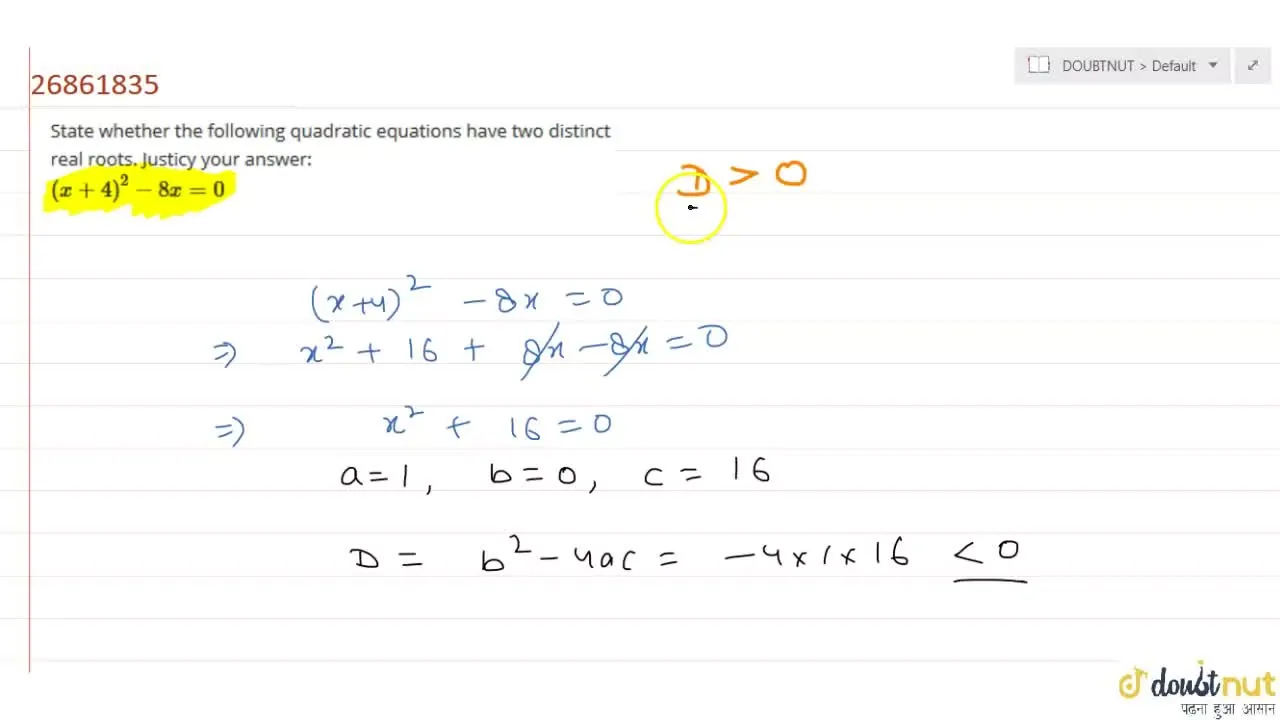State whether the following quadratic equations have two distinct real roots. Justicy your answer:
(x+4)2−8x=0
Given equation is (x+4)2−8x=0
⇒x2+16−8x−8x=0[∵(a+b)2=a2+2ab+b2]
⇒x2+16=0
⇒x2+0.x+16=0
On comparing with ax2+bx+c=0 we get
a=1,b=0 and c=16
∴ Discriminant D=b2−4ac=(0)2−4(1)(16)=−64<0 i.e. D<0
Hence the equation (x+4)2−8x=10 has imaginary roots, i.e. no real roots.
Related Playlists
Similar Questions
State whether the following quadratic equations have two distinct real roots. Justicy your answer:
x2−3x+4=0View SolutionState whether the following quadratic equations have two distinct real roots. Justicy your answer:
2x2+x−1=0View SolutionState whether the following quadratic equations have two distinct real roots. Justicy your answer:
3x2−4x+1=0View SolutionState whether the following quadratic equations have two distinct real roots. Justicy your answer:
(x+1)(x−2)+x=0View SolutionState whether the following quadratic equations have two distinct real roots. Justicy your answer:
x(1−x)−2=0View SolutionState whether the following quadratic equations have two distinct real roots. Justicy your answer:
2x2−6x+92=0View SolutionState whether the following quadratic equations have two distinct real roots. Justicy your answer:
(x−1)(x+2)+2=0View SolutionState whether the following quadratic equations have two distinct real roots. Justicy your answer: (x−√2)2−2(x+1)=0
View SolutionState whether the following quadratic equations have two distinct real roots. Justicy your answer:
√2x2−3√2x+1√2=0View SolutionIn the following, determine whether the given quadratic equations have real roots and if so, find the roots: 16x2=24x+1 (ii) x2+x+2=0
View Solution


